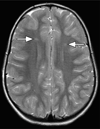Sickle cell disease in childhood: from newborn screening through transition to adult medical care
- PMID: 24237976
- PMCID: PMC4262831
- DOI: 10.1016/j.pcl.2013.09.006
Sickle cell disease in childhood: from newborn screening through transition to adult medical care
Abstract
Sickle cell disease (SCD) is the name for a group of related blood disorders caused by an abnormal hemoglobin molecule that polymerizes on deoxygenation. SCD affects the entire body, and the multisystem pathophysiology begins in infancy. Thanks to prognostic and therapeutic advancements, some forms of SCD-related morbidity are decreasing, such as overt stroke. Almost all children born with SCD in developed nations now live to adulthood, and lifelong multidisciplinary care is necessary. This article provides a broad overview of SCD in childhood, from newborn screening through transition to adult medical care.
Keywords: Diagnosis; Genetics; Pathophysiology; Sickle cell disease; Survival; Treatment.
Copyright © 2013 Elsevier Inc. All rights reserved.
Conflict of interest statement
Conflict of Interest: Former advisory board member for Apotex Corporation.
Figures




References
-
- Gaston MH, Verter JI, Woods G, et al. Prophylaxis with oral penicillin in children with sickle cell anemia. N Engl J Med. 1986;314(25):1593–1599. - PubMed
-
- Falletta JM, Woods GM, Verter JI, et al. Discontinuing penicillin prophylaxis in children with sickle cell anemia. Prophylactic Penicillin Study II. J Pediatr. 1995;127(5):685–690. - PubMed
-
- Lane PA, O’Connell JL, Lear JL, et al. Functional asplenia in hemoglobin SC disease. Blood. 1995;85(8):2238–2244. - PubMed
-
- Telfer P, Coen P, Chakravorty S, et al. Clinical outcomes in children with sickle cell disease living in England: a neonatal cohort in East London. Haematologica. 2007;92(7):905–912. - PubMed
Publication types
MeSH terms
Grants and funding
LinkOut - more resources
Full Text Sources
Other Literature Sources
Medical

